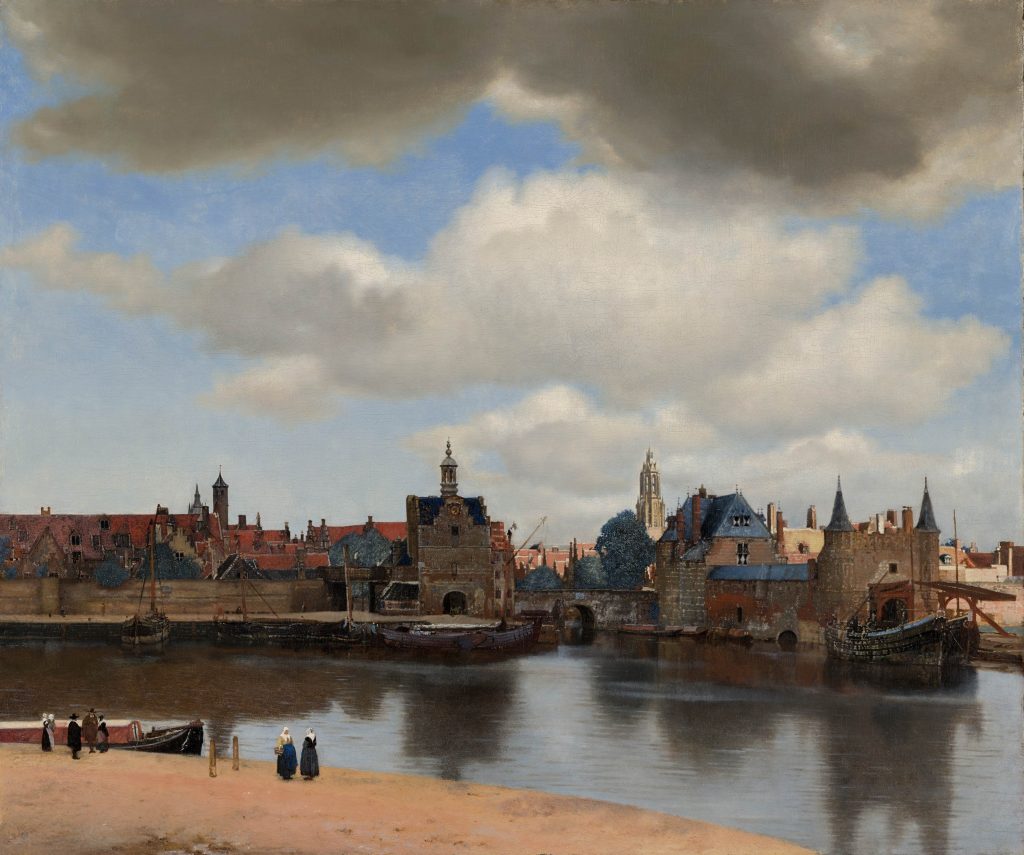Have you been to the Vermeer exhibition at the Rijksmuseum in Amsterdam? The exhibition includes 28 of the 37 known paintings by the 17th-century Dutch master: the largest collection of Johannes Vermeer’s works ever brought together in a museum. His paintings have long since captured peoples’ imaginations, however. For example, several Polish poets have been inspired to write verses about Vermeer’s works. Two well-known authors who did so are Adam Czerniawski and Adam Zagajewski. The latter wrote a number of poems about or featuring Vermeer, such as “Vermeer’s Little Girl”, which describes the famous “Girl with a Pearl Earring”.

Moreover, both Czerniawski and Zagajewski composed poems about Vermeer’s “View of Delft”: a panorama of the city where the painter lived and worked, made in ca. 1660-1661. Czerniawski’s poem dates from 1969. It begins as follows:
“In The Hague there is a view of Delft,
In The Hague there is a perspective of Delft,
All it takes to see Delft,
Is to reach the first floor of the Mauritshuis,
Where the panorama is not obstructed by
A hill or a broad chestnut tree.”
The poet speaks of two views of Delft: the modern one, which is made of “steel and glass”, and the 17th-century one, captured on canvas. In the rest of the poem, Czerniawski considers his own relationship with – and desire to witness – these two “Delfts”, and tries to describe both the painting and the city itself.
The poem by Zagajewski dates from 1983. It is much shorter:
“Houses, waves, clouds, and shadows
(dark-blue roofs, brown bricks):
at last, you have become but a glance.
The uncontrolled, calm eyes of objects,
glittering with blackness.
You will outlive our admiration, our tears,
and our noisy, despicable wars.”
In but a few sentences, Zagajewski presents the painting as an everlasting ideal, which observes the ever-changing, cruel world.
We wish a lovely time to those of you who are fortunate enough to have a ticket for the exhibition, where you can see Vermeer’s “View of Delft” for yourselves. Don’t worry if you didn’t get a ticket: you can see the painting in the Mauritshuis in The Hague after the exhibition in Amsterdam ends. And who knows, maybe you will be inspired to write your own poems!
*I originally wrote this post for the social media outlets of the Dutch Embassy in Poland. This was post no. 43.